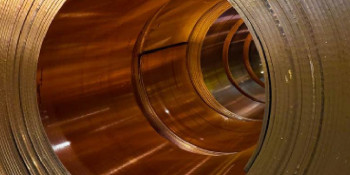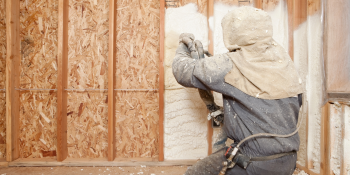Q&A Forums
Spraying rafters in attic. Post New Topic | Post Reply
| Author | Comments |
|---|---|
|
Edward Brassington
Posted: Feb 10, 2010 08:31 PM
|
Spraying rafters in attic.
Hello MasonRecently we sprayed the underside of a roof deck with closed cell spray foam. The foam was applied five inches thick directly to the plywood and between the rafters. The rafters were not covered. The customer now has some heat loss through the actual rafters. The outline of the framing is visible from outside and is melting the snow at each rafter. Would it be Ok to spray the rest of the exposed rafters to prevent the thermal bridging. I have heard previously that wood should not be completely encased with foam due to potential rotting. In this application the only part of the rafter that is not foamed will be the top side of the rafter that is on the underside of the plywood roof deck. We are prepared to go back to the customers house to correct the problem. I want to make sure we are doing the right thing. Thanks for your help. Northern Sprayer. |
|
mason
Posted: Feb 11, 2010 12:45 PM
|
I am an advocate of spraying all of the rafter. This minimizes the potential for thermal bridging through the wood and provides better moisture condensation control. You don't need a lot just about an inch, since the wood has some R value on its own. If you spray lengthwise it is very easy to spray the top and sides of the rafter while you are spraying the cavity space. Be sure to account for the extra foam in your bid. |
|
Posted: Feb 11, 2010 11:24 PM
|
...since wood has an rfactor of about r1 per inch it is obvious to see that in a cathedralized ceiling with,,lets say 2x8 or 2x10s for frameing you would only have about r 8-10 respectively...and if you have now put about 5-6 inches of closed cell foam in between these frameing members with an r35 or so you can see the difference between the rafter itself and the spf insulation in the rafter bay cavity... yes you will see stripeing on the roof,,, conversely,,it really also is showing the inefficiency of the r38 batt or cellulose it replaced as well...what we already knew,,that the r38 batt works at sometimes close to 1/2 its labled values in real world performance.."i never noticed this striping before i foamed the roof",,,duh go figure,,,,you were loosing almost as much heat thru the "insulation" as you were through the framing members themself... sprayed a 2x12 metal framed structure last year with just that scenerio..told the builder he would see striping(education,,education,,education b4 the job),,,sprayed 7-8" cc between the metal studs as he insisted he wanted,,,i suggested filling with oc and covering over stud as mason suggested but he had cc blinders on...plumber by trade,,go figure,,,winter in the cornfield with a good snow load reveled significant noticable striping ,,,not acceptable in this beautiful custom,,fortunatlely (for us)the lid wasnt hung yet so back we came and "coved" over the metal studs with oc foam..gave him a heck of a deal too..lol...and low and behold,,this winter the striping is gone... thermal bridging is real,,,if you go to bs.com and read a bit you will see walls with 1" foam board exterior sheathing with 2-3" cc in the stud bays really is a superior wall system,,and many of my "foam-friendly" builders have incorporated this technique into their "frame-it,,foam-it,,and f-it" mentality,,works well,,and thermal imageing confirms this... so these walk-up attic conversions with native 2x6 rafter frameing with spf inbetween are prone to this stripeing,,,let em know before hand..again,,what it is showing is that the foam excels in retarding(rush limbauh moment rofl) the movement of hot to cold,,physics is physics.. 'dude |





























